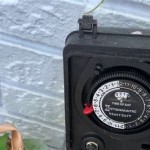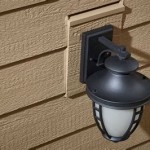How To Repair Outdoor Wicker
Outdoor wicker furniture adds a touch of elegance and comfort to any patio or garden. However, with constant exposure to the elements, wicker can become damaged over time. Fortunately, repairing damaged wicker furniture is often a simple process that can restore its beauty and functionality. This guide will provide a comprehensive overview of common wicker repairs, offering step-by-step instructions and helpful tips to ensure your wicker furniture remains in top condition.
Assessing the Damage
The first step in repairing wicker furniture is to carefully assess the damage. This involves identifying the type of damage, the severity, and the best approach to repair. Some common types of damage include:
- Broken Wicker Weaves: These are often caused by wear and tear, and can be repaired by reweaving or using a wicker repair kit.
- Loose Wicker: Wicker strands can become loose due to age or exposure to moisture. These can be tightened using specialized tools or secured with glue.
- Cracked or Split Wicker: Cracks and splits in wicker can be repaired with epoxy or wood filler, followed by sanding and finishing.
- Damaged Frames: If the wicker frame is damaged, it may need to be repaired or replaced entirely.
Once you've assessed the damage, you can gather the necessary supplies and begin the repair process.
Tools and Materials
Depending on the type of repair, you'll need different tools and materials. Here's a list of common items for repairing wicker furniture:
- Wicker Repair Kit: These kits often contain pre-cut wicker strands, glue, and tools for weaving.
- Wicker Weaving Tool: This tool helps you create tight weaves and secure the wicker strands.
- Epoxy or Wood Filler: Used to repair cracks or splits in wicker.
- Sandpaper: Used to smooth out repaired areas.
- Wood Stain or Paint: For matching the color of the wicker.
- Scissors or Wire Cutters: To cut wicker strands to size.
- Screwdrivers: For tightening loose screws or securing the frame.
- Heavy-Duty Glue: For attaching loose strands or securing repairs.
- Clamps: To hold repairs in place while the glue dries.
Always choose high-quality materials specifically designed for wicker repairs to ensure a lasting and durable solution.
Repairing Broken Wicker Weaves
Repairing broken wicker weaves involves reweaving new strands into the damaged area. This process requires patience and a steady hand. Follow these steps for a professional-looking repair:
- Prepare the area: Clean the damaged area thoroughly with a damp cloth. Remove any loose or broken strands.
- Matching the weave: Carefully observe the existing weave pattern and choose strands that match the color and thickness. Choose strands of the same material as the original wicker if possible.
- Weaving the strands: Using the wicker weaving tool, carefully weave the new strands into the existing weave, ensuring it's snug and secure. You may need to use a combination of over and under weaves to achieve a seamless repair.
- Securing the ends: Once the new strands are woven, secure the ends with glue or a small nail if necessary. Leave the glue to dry completely before using the furniture.
For minor repairs, consider using a wicker repair kit, which simplifies the process with pre-cut strands and instructions.
Tightening Loose Wicker
Loose wicker strands can detract from the overall appearance and weaken the structure. Tightening them is a straightforward solution, using specialized tools or glue. Here's how to do it:
- Using a wicker tightening tool: This tool features a hook that catches the loose strand and a handle to pull it tighter. Gently tighten the loose strand, ensuring it's secure but not overly stretched. This often requires patience and may need repeating multiple times.
- Securing with glue: For loose strands that are difficult to tighten, you can use a strong, flexible glue to secure them to the surrounding wicker. Apply the glue sparingly to avoid creating visible patches.
Always test the glue on an inconspicuous area of the wicker to ensure compatibility and avoid any discoloration.
Repairing Cracked or Split Wicker
Cracks and splits in wicker can be unsightly and weaken the structure. These repairs require filling the gaps and smoothing the surface. Here's how to approach this task:
- Cleaning the area: Carefully clean the cracked or split area with a damp cloth to remove any dirt or debris.
- Filling the gaps: Apply epoxy or wood filler to the crack or split area, ensuring it fills the gap completely. Smooth the surface with a putty knife to ensure a uniform application.
- Sanding the surface: Once the filler has dried, sand the surface with fine-grit sandpaper to create a smooth transition and remove any excess filler. Use a sander with a sanding pad appropriate for the surface you're working with.
- Matching the color: If necessary, use a matching wood stain or paint to blend the repaired area seamlessly with the rest of the wicker.
Choose a filler specifically designed for wicker materials to ensure it bonds well and withstands outdoor conditions.
Maintaining outdoor wicker furniture is essential for preserving its beauty and extending its lifespan. Regular cleaning, protection from harsh weather, and periodic inspections can help prevent future damage and keep your wicker furniture looking its best for years to come.

Fixing Outdoor Rattan Furniture A Pretty Life In The Suburbs

5 Easy Steps To Replace The Wicker Strands Damaged

Wicker Furniture Repair Guide Jessica Welling Interiors

Resin Wicker Patio Furniture Unraveling Hometalk

How To Fix The L Off Broken Weaving Of Chair

How To Repair And Re Wicker Furniture Patio Ions

Wicker Furniture Repair Guide Jessica Welling Interiors

How To Repair Resin Wicker Chairs Using Glue Gun Atc Furniture 2024

Fix Rattan Garden Furniture Resin Wicker Repair Outdoor

How To Fix Wicker Patio Furniture







